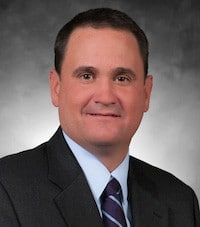
Institutional investment managers weren’t the first to adopt electronic algorithmic trading, but for the most part they’re now on board.
The challenge now is to optimize algo usage, which entails expanding deployment where warranted, analyzing brokers and trading venues, and refining the programs themselves. In an ever-evolving marketplace, algo optimization needs to be an ongoing collaboration of the buy side with its brokers and technology providers.
Colorado Public Employees’ Retirement Association is raising the bar on its stock trades that execute via algorithms.
“We have come to utilize them with increasing frequency,” said Jim Liptak, director of equities at the $45 billion pension plan. “In the past several years, PERA has expanded the variety of algos it uses, both in terms of strategy and market. We currently trade the majority of our domestic orders using algorithms.”
Colorado PERA deploys algos to find the best price, and — crucially for a large institutional asset owner — the right size. In the interest of minimizing information leakage and the attendant adverse market impact, the organization has stepped up its deployment of algos that probe so-called dark trading venues.
“The breadth of our algo choices allows us to tailor each trade accordingly, choosing strategies that are appropriately patient (or aggressive, if needed) with reasonable access to liquidity,” Liptak told Markets Media. “Algos can increase or reduce urgency, as necessary, while looking to liquidity in multiple venues, lit and dark, in order to find counterparties. The trading decisions incorporating these multiple inputs are facilitated by the rules-based framework of various algo strategies.”

Jim Liptak, Colorado PERA
An estimated 80% to 85% of trading volume on the New York Stock Exchange is transacted via algorithms. Even if that number stays the same, helping the buy side get, or stay, up to speed on algo trading is big business for algo developers, trade routers and technology providers.
KCG Holdings added about 30 buy-side customers in its U.S. algorithms business over the fourth quarter of 2014 and first quarter of 2015. On a May 1 earnings conference call, KCG Chief Executive Officer Daniel Coleman cited selling algos to the buy side as the company’s #1 growth area.
“There’s a real opportunity in U.S. algos with respect to the buy side,” Coleman said June 3 at an industry conference hosted by Sandler O’Neill. The algo business is especially attractive for brokers “because the infrastructure is there and it will require very little capital,” Coleman said.
Investment managers are boosting their algo capabilities amid an overall drive for more empowerment in the trading process. This trend is underpinned by factors including capital constraints on the sell side; a ‘democratization’ of trading technology; and an intense focus on U.S. equity market structure and its perceived deficiencies. Add it all up, and managers with fiduciary responsibility to end-user investors are less comfortable outsourcing.
“There’s concern on the buy side that if they turn all of the execution over to the broker, they won’t get best execution,” said David Polen, global head of electronic execution at trading-technology provider Fidessa. “The industry is saying ‘let’s re-examine the concept of best execution and how to approach it. Is it analytics, is it a new market structure?’ One of the ways the buy side looks at this is by saying, ‘If it’s our own algo, then we’re controlling best execution.’”
Polen noted that a buy-side firm that uses its own algos can choose to execute trades with any broker, whereas if a firm uses a particular broker’s algos, it would trade with that broker. But directed execution potentially multiplies post-trade clearing costs. “This puts stress on the old idea of re-consolidating at the mid-office,” Polen said. “You’re going to see a structural pressure on clearing costs, as a result of the buy side taking control of their own algos.”
Beyond calibrating algo strategy by type of trade, Colorado PERA also may use more than one algo to ‘work’ an order, and the pension plan also tracks which broker algos aren’t up to snuff.
“If we are seeking liquidity in a thinly traded name, we may attempt to source dark liquidity with a preferred broker’s ‘dark’ algo strategy, and after exhausting the supply of dark liquidity, proceed to utilize a second broker’s ‘participation’ algo strategy in the lit markets,” Liptak said. “At times, our analysis indicates a preference to avoid a particular broker’s algo strategies. In these cases, we may decide to provide the broker exclusively with (Market on Close) order flow.”
The savvy of brokers and tech providers is “essential to our use of algo strategies,” Liptak continued. “As algos lose their effectiveness, due to overuse, similarity to other algos, or potential gaming by market participants, brokers can update their algo strategies to improve their efficiency. Also, as new venues like IEX come on line, brokers can re-work existing strategies or introduce new ones to account for the changing landscape. Meanwhile, technology providers offer order management systems and execution management systems that allow us direct access to a wide variety of algo strategies from numerous brokers.”
Featured image by Dmitry Nikolaev/Dollar Photo Club





